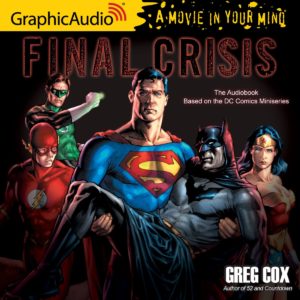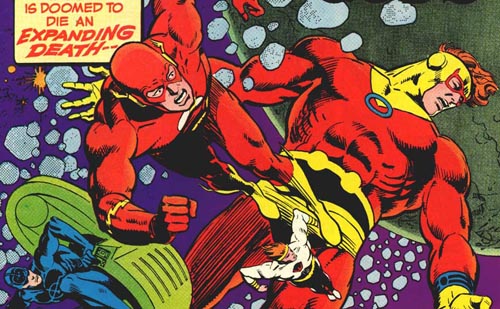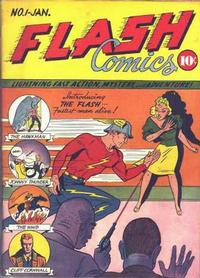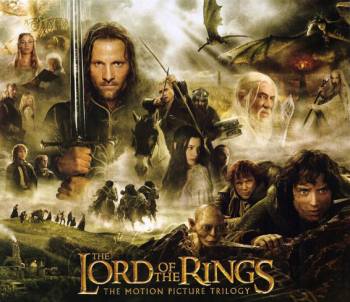 After listening to Stop Motion, I picked up the Graphic Audio adaptation of Final Crisis.
After listening to Stop Motion, I picked up the Graphic Audio adaptation of Final Crisis.
It actually flows better than the comic book, especially toward the end, when the comic starts fragmenting the narrative. (That part is great as metatext, but there’s a lot of “wait, what just happened?” as you read it.) Scenes are fleshed out, and narrative fills in which details you need to glean from the artwork. There are a number of things that I thought had been added to the adaptation, but when I went back to read the original, they were there if you looked closely.
And of course having it all together avoids the problem of delays between chapters that plagued the original release, though that’s true of the collected edition too.
A lot of that is probably the novelization it was based on. It credits the story only to Greg Cox, with no mention of Grant Morrison or any of the artists, which is disappointing. But I don’t think it would work well as a book. The voice acting, music and sound make up for a lot of the lost visual punch and visual structure of the story, and it needs more than just the words.
The acting is compelling, and I found myself more interested in several of the characters as a result: particularly Renee Montoya as the Question, who moves in and out of the story in a number of places, but we actually get to see (or hear) what she’s doing rather than have to piece it together from a panel here and a panel there.
Alterations
One of the weird things is that it incorporates some of the tie-ins, but excludes the one that actually sets up Mandrakk. The Black Lightning/Tattooed Man story from “Submit” is included, along with the framing sequence from the Batman crossover. Those are good choices. “Submit” is a breakneck story that shows what’s going on at the street level when Darkseid takes over, and “Last Rites” clarifies what’s happening to Batman in the Evil Factory
But Superman getting recruited for a multiversal quest to stop Mandrakk, setting up the villain who appears in the final chapter? Completely missing. As a result, Mandrakk appears almost out of nowhere. Superman’s absence during the invasion is explained by having Brainiac 5 recruit him directly from Lois’ hospital room, sending him off to Legion of Three Worlds, and Ultraman’s appearances at the end are replaced with Mandrakk’s co-conspirator Monitor. It streamlines the story, but I think it streamlines it a little too much.
Anti-Life
The Anti-Life Equation is so terrifying because it’s not just mind control, it compels the surrender of free will. Those who have submitted spout slogans about how it justifies anything, how it’s so much easier than the struggles of life and love. It’s insidious, because psychological research has shown that decisions do take effort, and it is easier to offload tough decisions to a schedule, a policy, a leader, etc. The brain likes taking shortcuts around cognitive load.
There’s an appeal to never having to worry about making the wrong choice.
But we want to be able to make choices.
Darkseid Is
Another interesting thing about Final Crisis is how much damage Darkseid does just by existing. He doesn’t do any traditional super villain things in the entire story. No battles, no plotting. He just sits on his throne, taking advantage of a battle he already won, imposing his will on an entire planet and pulling it into a singularity. He spends most of the story sitting in an underground bunker, but his presence presses down on the world.
And he’s damn hard to kill. It takes Batman with a magic bullet, two Flashes leading a manifestation of death, Wonder Woman’s Lasso of Truth, and Superman producing the exact counter-frequency to cancel out what remains of Darkseid’s soul’s quantum waveform as it lingers for months, continuing to drag Earth into oblivion.
Metal
But wow, I’m really seeing the parallels with Dark Knights: Metal even more strongly than when I was just comparing to memory.
Barbatos, like Darkseid, takes over the world between issues, and we jump to a handful of heroes mounting a desperate resistance. The keystone of the multiverse – conveniently the main DC Earth – is in danger of being pulled “downward” into an unending hell. And everyone’s fighting twisted versions of the heroes.
They’re a lot more alike than any of the Crisis events are to each other or to Metal.
Revisiting the Tie-Ins
After listening to the audio version, I re-read Final Crisis and read most of the tie-ins, some of them for the first time.
First, the tie-ins included in the Final Crisis collected edition:
- Superman Beyond: I still think it’s essential, and I’m torn between thinking it should have been incorporated into the main story to begin with, and acknowledging that it sort of stands on its own and gave them the chance to do the 3-D gimmick for the first printing.
- Batman/Last Rites: The framing sequence does help, but the stuff going on inside Batman’s head mostly isn’t relevant to this story.
- Submit (Black Lightning/Tattooed Man): While not required to understand the main story, it adds a lot by showing the personal impact of the invasion.
And the others:
- Resist (Checkmate): It broadens the scope, but can be skipped. I do like using the captive villain AIs as a way to get around the ALE’s control of communication channels.
- Rogues Revenge: I didn’t like it as much this time through as I did ten years ago. The story was in the works before it became part of Final Crisis, and it shows. It still works as Rogues: Rebirth, but now I think the Crisis connections hurt more than they help.
- Revelations: It’s a much tighter story that weaves in and out of issues 2 and 3 (if not seamlessly). It picks up the mostly-dropped threads of the Crime Bible and Vandal Savage, shows the early stages of Darkseid’s takeover, and presents an interesting combination of street-level and supernatural perspectives on a cosmic event. I didn’t read it originally, but I’m glad I finally got around to it. And I find myself wanting to go back and look for more Montoya/Question stories.
I didn’t re-read Requiem. I still haven’t picked up Rage of the Red Lanterns. I also didn’t re-read Legion of Three Worlds, which from what I recall has nothing to do with Final Crisis except that Superman passes through it between Superman: Beyond and his return to the main series. I remember it being a lot more confusing and a lot less interesting than Final Crisis itself despite being a more straight-forward superhero story.
I do want to re-read Multiversity now, though!


 So let’s take a moment and just go over the finer points of my argument. When the Flash began way back in the 40s, he was a character that was given his own book nearly as soon as he was established. In January 1940, Flash Comics began as a variety comic that would feature new characters and give them a chance to flourish. Some of the most famous of these characters would be Johnny Thunder, Hawkman, Hawkgirl and Black Canary. This began an eerie precedence of the Flash establishing ideas and characters that would last and break out of his book time and time again. The book ran nearly the entire span of the Golden age, ending just a few months shy of the “official” end date.
So let’s take a moment and just go over the finer points of my argument. When the Flash began way back in the 40s, he was a character that was given his own book nearly as soon as he was established. In January 1940, Flash Comics began as a variety comic that would feature new characters and give them a chance to flourish. Some of the most famous of these characters would be Johnny Thunder, Hawkman, Hawkgirl and Black Canary. This began an eerie precedence of the Flash establishing ideas and characters that would last and break out of his book time and time again. The book ran nearly the entire span of the Golden age, ending just a few months shy of the “official” end date. 